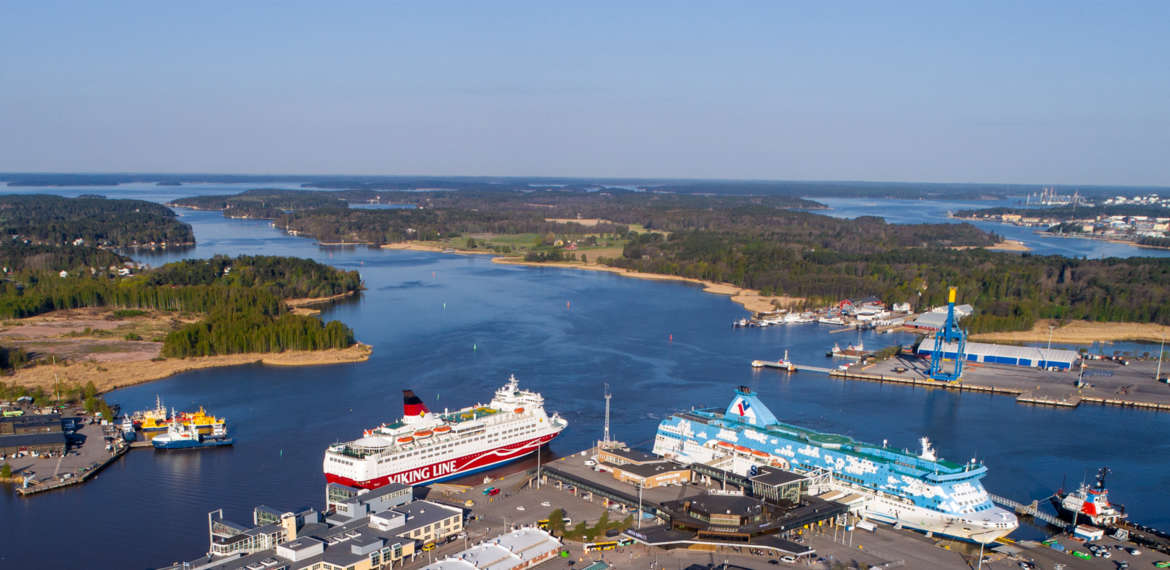Follow-up is an essential part of dredging

The environmental impacts of dredging are being debated on by both experts and citizens. The aspects of most interest are the impacts of dredging and disposal on the water quality, vegetation, benthos, and fish. The Port of Turku has been following the impacts of dredging on the water systems and fishery annually since 1989. The main goal of the follow-up is to ensure that the environmental and health risks caused by the dredging and disposal activities, which are necessary for maritime traffic, remain at an acceptable level.
The Archipelago Sea is burdened by many factors
The Turku port area and Airisto sea area are part of the inner archipelago which comprises of islands of different size, narrow straits, bays and small areas of open sea. The water quality differs a great deal from the other parts of the sea, which is due to both the environmental factors and the load resulting from waste water and water carried by rivers. Due to several sources of loading, it is hard to show that the observed changes in the waterways and stock of fish have been caused primarily by the port’s operations. In recent years, it has been observed that in addition to human activities, climate change impacts the state of the Baltic Sea on the whole, which makes it even harder to evaluate the impact of individual factors.
Muddying of water will pass quickly
The most conspicuous impact of the disposal of the dredging mass is the muddying of water, which is caused by the fine soil being mixed with the water during the disposal. Muddied water is carried in different directions from the disposal site by currents, but will eventually settle at the bottom near the disposal site. It has generally been observed that muddying is very local, and the clarity of water will return to normal level soon after the completion of dredging. For example, according to a study conducted by Luode Consulting in 2003, the muddying caused by a single disposal load could no longer be observed two hours after the disposal.
Eutrophication affects the spawn of Baltic herring
Based on studies conducted over a period of thirty years, it cannot be said that the operations have had adverse impacts on the stock of fish. For example, the spawning of Baltic herring has weakened simultaneously in comparison areas, too. The general eutrophication of the water system has made the water muddy and changed the bottom so that Baltic herring spawns closer to the surface, and thus the waves and currents detach the roe from the vegetation. The size of the spawn of Baltic herring in the Baltic Sea, including the Archipelago Sea has, however, began to grow, and in 2013 the spawn was nearly 90% bigger compared with year 2000.
Follow-up of water organisms
There is no clear evidence on the impacts of dredging and disposal on the water organisms in the northern part of Airisto, either. For example, according to Ramboll Finland Oy’s report, it cannot be concluded on the basis of the results from 2003–2009 that dredging and disposal would have caused increased content of adverse substances in water organisms in the northern part of Airisto. Similar findings were also made in the summary report for 1989–2002. The contents are affected by many different factors, such as changes in the catchment area and local weather conditions. Depending on the item, comparison areas have shown increased values, even higher than in the research area. There is variation in the content of adverse substances from year to year, and the differences can be quite significant. No definite, regular trend can be easily observed in the results.
Enhanced co-operation
In addition to the Port of Turku, the water quality of the Archipelago Sea and the Turku region is monitored by a number of other parties. It would be ideal if applicable parts of different follow-up studies could be integrated, which would provide a clearer picture of the factors that affect the state of the water systems and new solutions for improving the Archipelago Sea.
